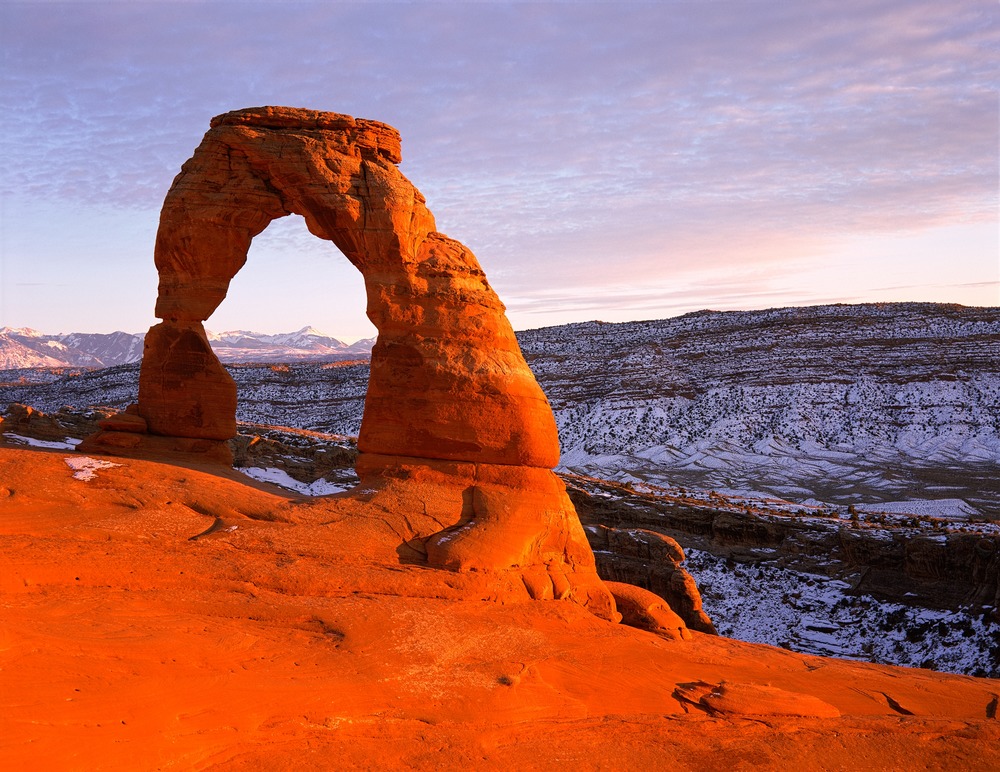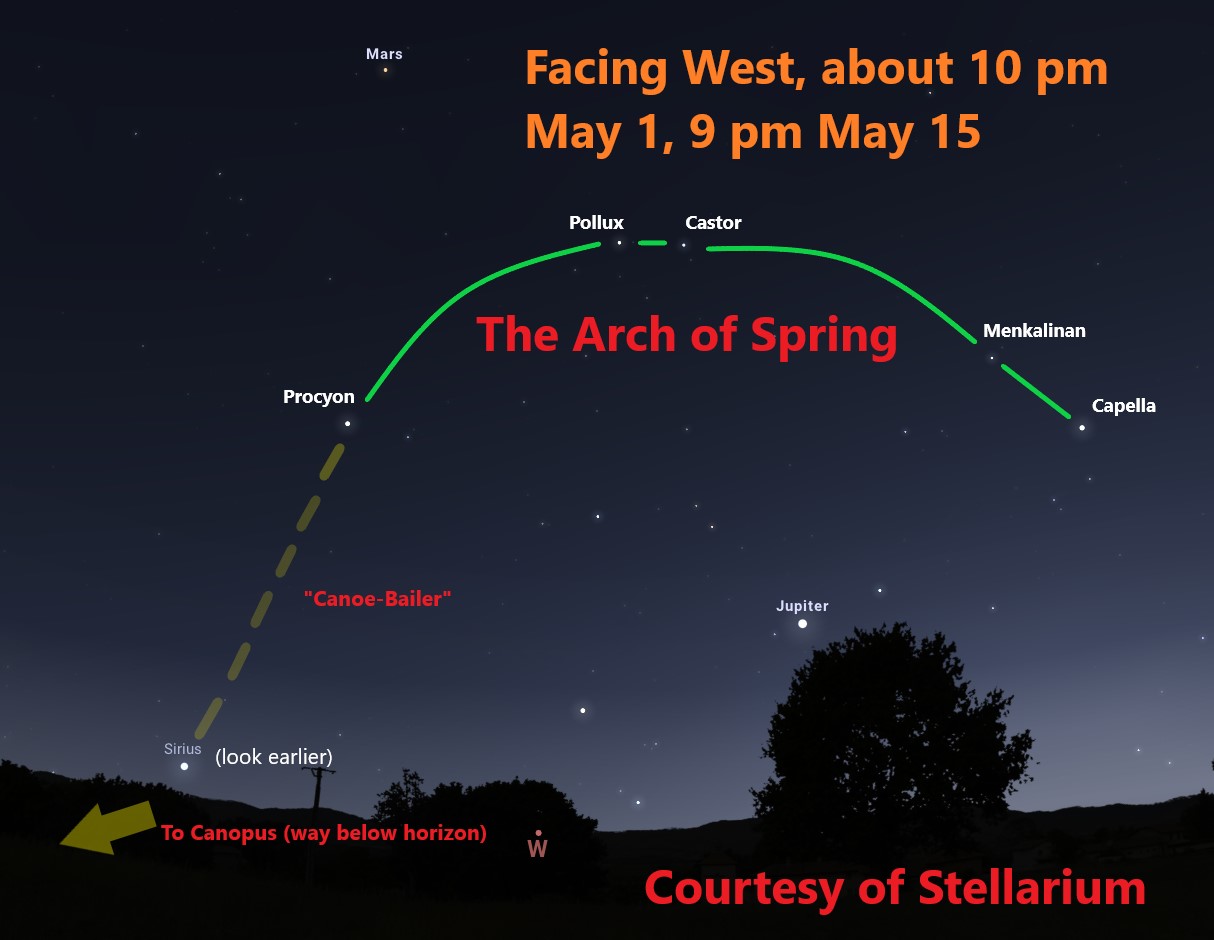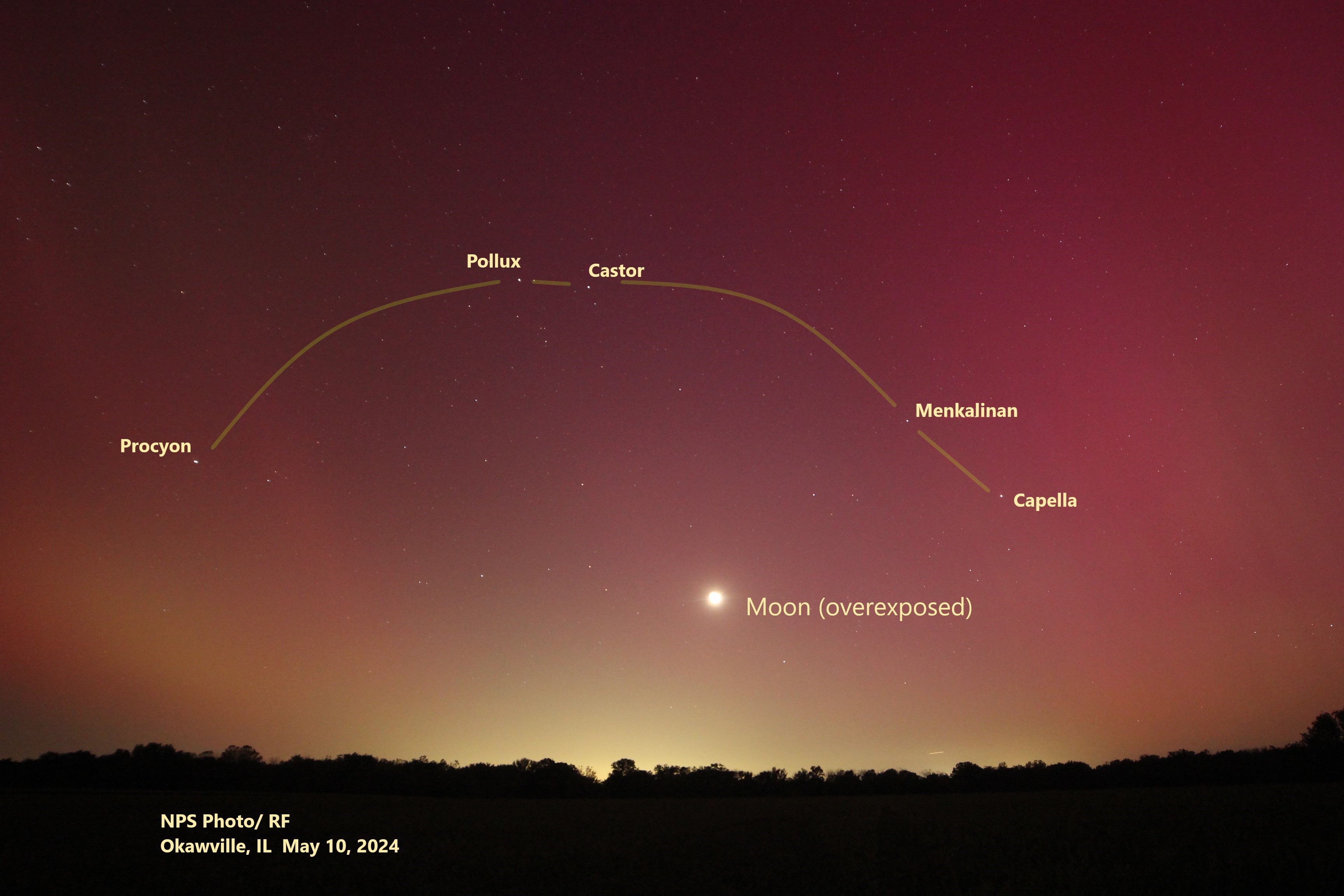ARCHES… GREAT, SMALL, AND COSMIC
As many of you know, I have been a Park Ranger here at Gateway Arch National Park for more than three decades, for much of that time being part of a two-Ranger family. Like many of my colleagues, when we travel as a family, we often visit other National Parks, including the “Big Five” in Utah in 2015. After having an awesome time at Canyonlands, we arrived very late for a night’s rest in Moab. We were just too tired to get going early enough to get over to Arches National Park before the day’s expected 100° plus heat arrived. We were unable to hike all the way to Delicate Arch as we had planned, but still got some great pictures of it and many other sights, from multiple viewing points.

Delicate Arch, courtesy National Park Service
We who live here too often take the Gateway Arch for granted. Having worked at the Top probably more than 2,000 times since 1988, I never get tired of watching visitors’ reactions, from the one-of-a-kind tram ride experience to arriving at the Observation Deck, realizing that there is nothing underneath them, 630 feet to the ground. Mark your calendar for October 28th, the sixtieth anniversary of the completion of the epic saga of construction. We plan to invite some of the surviving builders of the Gateway Arch in to meet the public, amongst other activities around that time. Check our website and social media for details, including exact dates and times.
Sometimes when you take a road trip, you encounter interesting, sometimes kitschy places. If you ever are traveling on Interstate 70 a little east of St. Louis, don’t fail to stop by the Vandalia Arch, a one tenth (63 foot) replica of Eero Saarinen’s creation.

Vandalia Arch, Vandalia IL NPS Photo/RF
As awe-inspiring cute as the “Baby Arch” may be, there is an even cooler arch that is seen in the night sky at this time of year. To trace out the Arch of Spring, start with Jupiter, the first “star” you see in the western evening sky as it starts to get dark in May. As it gets darker, around an hour after sunset, you will notice Castor & Pollux, the two Gemini Twin stars, shining well above Jupiter, side by side. They form the keystone of the cosmic arch. From the twins, follow the curve to the right to fairly bright Menkalinan and bright Capella, which form the north leg. Going the opposite way, you find Procyon, marking the south leg. The Arch of Spring is quite noticeable once you know where to look- note that it is covers a very large area of the sky. As you can see from the map below, it is much more flattened, more like a Tudor Arch shape than the soaring Gateway Arch. On the other side of the Arch from Jupiter, to the upper left of the Twins, note orange colored Mars, also easily seen.

The Arch of Spring is visible in the western sky during early May evenings
I have discussed the Arch of Spring several times in this blog, most completely in the May 2021 edition. As large as it is, even bigger is the huge pattern of the Canoe-Bailer of Makali’I”, prominent in Hawaiian sky traditions. To trace it out, first find the Arch of Spring, and then look well below and left of Procyon. Note the star Sirius, just above the west-southwestern horizon at the time of my map above- you may need to find a spot with an open view and/or look earlier. Sirius is actually the brightest star in the entire night sky- if you ever see any brighter starlike object, it must be a planet, usually Venus or Jupiter. The second brightest star in the sky, Canopus, marks the end of the Canoe-Bailer pattern. It would be far to the lower left of Sirius, way below the horizon. In fact, Canopus can never be seen from the latitude of St. Louis, as Earth’s axis is tipped a little too far away from it. I have seen Canopus quite a few times, on trips to Florida, New Orleans, and to solar eclipses in Australia and Southern Africa. The line from Sirius to Capella forms the enormous net, with the stretch from Sirius to Canopus forming the Canoe-Bailer’s handle. The story of Makali’I” and the huge net are discussed in the blog entry mentioned above.
I of course have seen the Arch of Spring many times and have pointed it out to many people. I got a new perspective on it after experiencing the display of the Aurora Borealis last May. From a fairly dark sky site, much of the sky glowed pinkish and greenish- the red color was more visible in camera images. Although known as the “Northern Lights” the display was so powerful that it ranged into the east, west, and even halfway up in the southern sky. I have never seen anything quite like it.

The magnificent display of the Aurora Borealis on May 10-11, 2024 extended all the way into the western sky, in front of the stars of the Arch of Spring.
Our first Gateway to the Stars program of 2025 will take place on May 10. A Park Ranger will present “A Walk Through History” at 7 pm, meeting on the West Entrance Plaza. In a sunset stroll, learn about the history of the area and how our Park came to be. Telescope viewing will follow on the Entrance Plaza, with views of the Moon, Jupiter and other objects available. The viewing may not be held if clouds block the sky- the entire program may be cancelled in the event of rain.
